
Charming St. Peter Port Waterfront: Gems of Guernsey
Discover the historical charm, breathtaking views, and vibrant culture of St. Peter Port Waterfront in Guernsey, where past and present blend seamlessly.
St. Peter Port Waterfront in Guernsey is a picturesque harbor town that effortlessly blends historical charm with modern amenities. As the capital of Guernsey, St. Peter Port offers stunning views of the harbor, with its crystal-clear waters and a backdrop of rolling hills. The waterfront is lined with colorful buildings, bustling markets, and inviting cafes, making it a perfect spot for leisurely strolls and people-watching. The town's rich history is evident in its well-preserved architecture and landmarks. Don't miss the opportunity to visit Castle Cornet, a historic fortress that has stood guard over the harbor for centuries. The castle offers fascinating exhibits and breathtaking views of the surrounding area. Another must-see is the Hauteville House, once the residence of the famous writer Victor Hugo, who spent 15 years in exile here. The house is a testament to his creativity and provides an intimate look into his life and works. For those who love shopping and dining, the St. Peter Port Waterfront has an array of boutiques, galleries, and restaurants to explore. From fresh seafood to local delicacies, the culinary scene is diverse and delicious. The town also hosts various festivals and events throughout the year, adding to its vibrant atmosphere. Whether you're a history buff, a foodie, or simply looking to relax by the sea, St. Peter Port Waterfront in Guernsey has something to offer everyone.
Local tips in St. Peter Port Waterfront
- Visit early in the morning to enjoy the serene atmosphere before the crowds arrive.
- Wear comfortable walking shoes as the cobblestone streets can be uneven.
- Check out the local market for fresh produce and unique souvenirs.
- Don't miss the daily noon-day gun firing at Castle Cornet.
- Take a guided tour of Hauteville House to fully appreciate Victor Hugo's legacy.
- Try the local seafood specialties at one of the waterfront restaurants.
Charming St. Peter Port Waterfront: Gems of Guernsey
St. Peter Port Waterfront in Guernsey is a picturesque harbor town that effortlessly blends historical charm with modern amenities. As the capital of Guernsey, St. Peter Port offers stunning views of the harbor, with its crystal-clear waters and a backdrop of rolling hills. The waterfront is lined with colorful buildings, bustling markets, and inviting cafes, making it a perfect spot for leisurely strolls and people-watching. The town's rich history is evident in its well-preserved architecture and landmarks. Don't miss the opportunity to visit Castle Cornet, a historic fortress that has stood guard over the harbor for centuries. The castle offers fascinating exhibits and breathtaking views of the surrounding area. Another must-see is the Hauteville House, once the residence of the famous writer Victor Hugo, who spent 15 years in exile here. The house is a testament to his creativity and provides an intimate look into his life and works. For those who love shopping and dining, the St. Peter Port Waterfront has an array of boutiques, galleries, and restaurants to explore. From fresh seafood to local delicacies, the culinary scene is diverse and delicious. The town also hosts various festivals and events throughout the year, adding to its vibrant atmosphere. Whether you're a history buff, a foodie, or simply looking to relax by the sea, St. Peter Port Waterfront in Guernsey has something to offer everyone.
When is the best time to go to St. Peter Port Waterfront?
Iconic landmarks you can’t miss
Castle Cornet
Discover the rich history and stunning views of Castle Cornet, a historic fortress and museum in Guernsey, offering a unique glimpse into the island's maritime past.
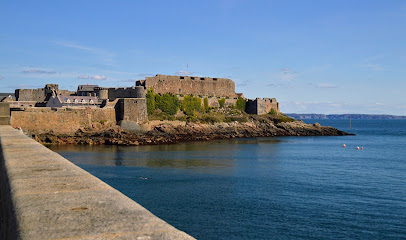
Saumarez Park
Experience the tranquil beauty and historical charm of Saumarez Park, Guernsey's premier destination for nature lovers and culture enthusiasts alike.
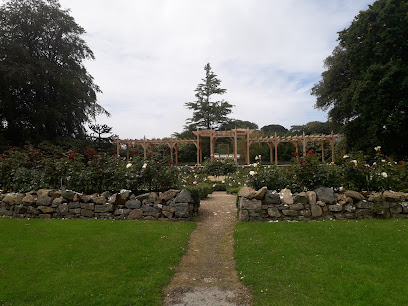
Ship & Crown
Experience the vibrant flavors and stunning views at Ship & Crown, Guernsey's premier restaurant and bar along the picturesque North Esplanade.
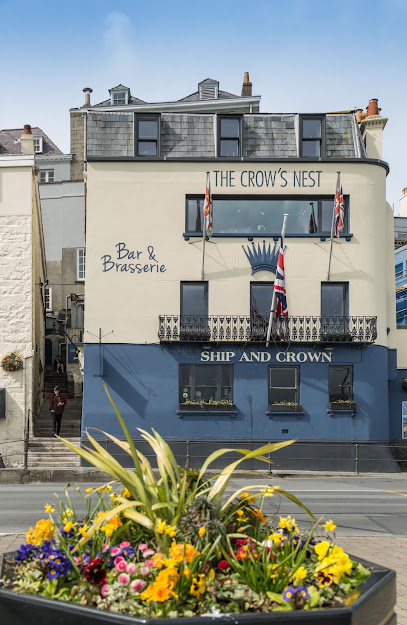
Hauteville House
Explore the enchanting Hauteville House, Victor Hugo's beloved home in Guernsey, where literature meets history amidst stunning coastal views.
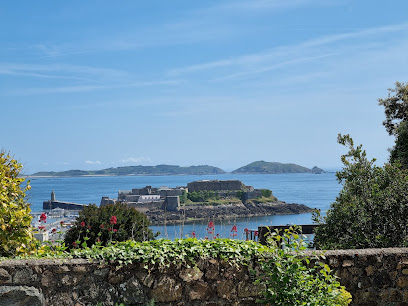
German Occupation Museum
Explore the poignant history of Guernsey's wartime past at the German Occupation Museum, where stories of resilience and survival come to life.

Guernsey
Explore Guernsey, a stunning island in the English Channel known for its natural beauty, rich history, and vibrant local culture, perfect for every traveler.

Sausmarez Manor
Explore the historic Sausmarez Manor in Guernsey, where beautiful gardens meet rich island heritage in a tranquil setting.
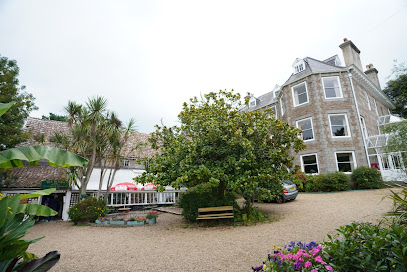
German Underground Hospital
Uncover the haunting history of the German Underground Hospital in Guernsey, a unique WWII site rich in stories and historical significance.
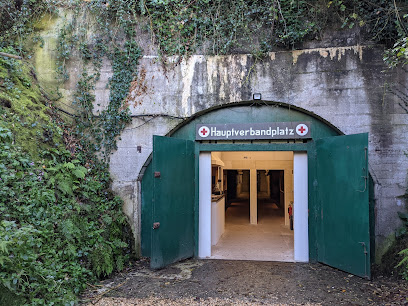
The Duke Of Normandie Hotel
Discover the historic charm and modern comforts of The Duke of Normandie Hotel in the heart of St. Peter Port, Guernsey.
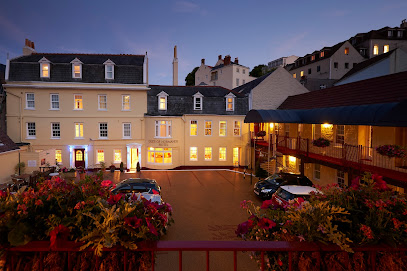
Fort Grey Shipwreck Museum
Explore the enchanting maritime history at Fort Grey Shipwreck Museum, where shipwreck tales and stunning coastal views await you.
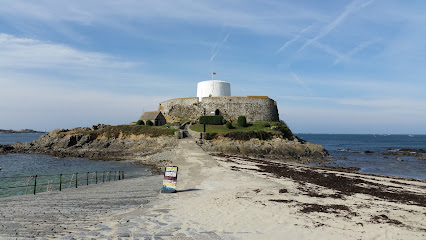
Guernsey Information Centre
Explore Guernsey with ease at the Guernsey Information Centre, your ultimate resource for local insights, maps, and guides to maximize your island adventure.
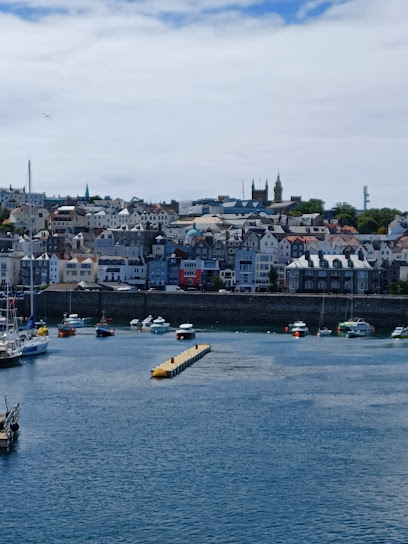
Town Church of St. Peter Port
Discover the serene beauty and rich history of the Town Church of St. Peter Port, an architectural gem in Guernsey's heart, perfect for every traveler.
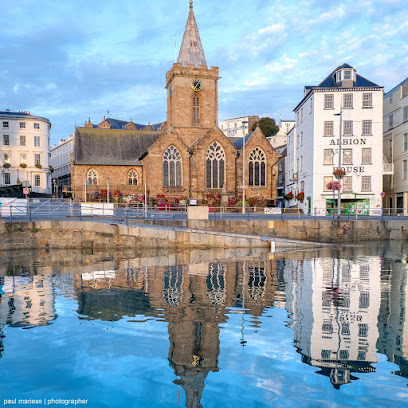
St. Peter Port Harbour
Explore the picturesque St. Peter Port Harbour in Guernsey, a vibrant marina blending stunning views, rich history, and local culture.
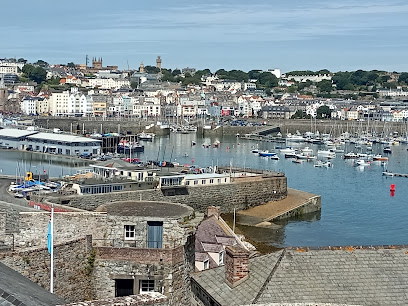
St Georges
Experience the charm of Guernsey at St. Georges, a cozy bed & breakfast offering stunning coastal views and warm hospitality for an unforgettable stay.
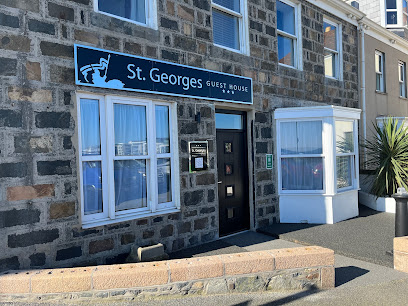
La Fregate Hotel
Experience the charm of Guernsey at La Fregate Hotel, featuring stunning sea views, gourmet dining, and a tranquil atmosphere for the perfect getaway.

Unmissable attractions to see
Hauteville House
Explore Hauteville House, the exquisite museum in Guernsey dedicated to the life and works of Victor Hugo, a literary icon of France.

Petit Port
Experience the tranquil beauty of Petit Port, Guernsey's hidden beach, perfect for relaxation, adventure, and unforgettable coastal views.
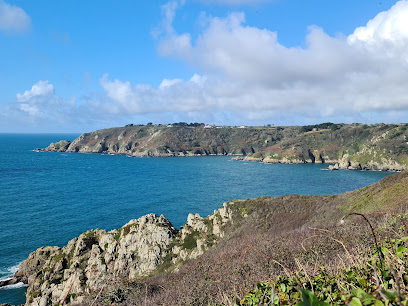
Guernsey Coastal Cruises
Experience the breathtaking beauty of Guernsey's coastline with Guernsey Coastal Cruises – an unforgettable maritime adventure awaits!
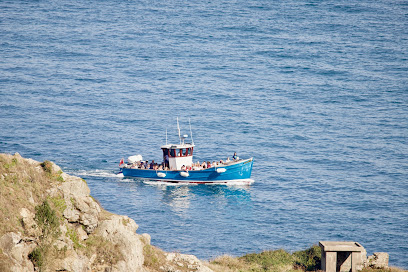
La Vallette Promenade
Discover the serene beauty of La Vallette Promenade, a scenic coastal pathway in Guernsey perfect for relaxation and exploration.
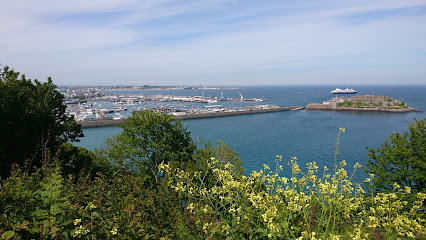
Quay Gallery
Explore the vibrant art scene at Quay Gallery in St. Peter Port, Guernsey, showcasing local and international talent in a captivating setting.
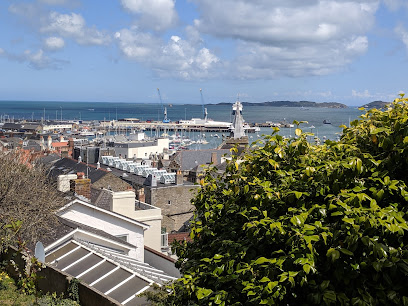
Sunken Gardens
Explore the lush landscapes and vibrant blooms of the Sunken Gardens in Guernsey – a serene escape into nature's beauty.
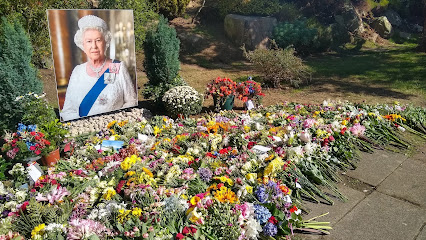
St. Peter Port War Memorial
Explore the St. Peter Port War Memorial in Guernsey, a serene tribute to bravery and sacrifice surrounded by beautiful gardens.
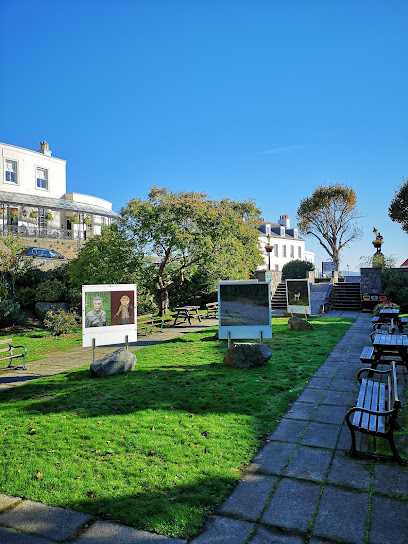
Essential places to dine
Dix Neuf
Experience delightful dining at Dix Neuf in Guernsey – where traditional flavors meet modern cuisine in a vibrant atmosphere.
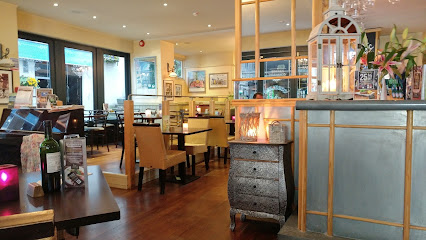
Crabby Jack's
Experience exquisite seafood dining with breathtaking views at Crabby Jack's by Vazon Bay in Guernsey.
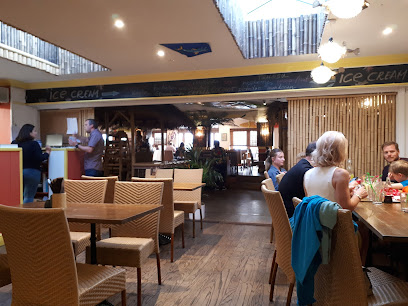
Slaughterhouse - Randalls
Savor exquisite flavors and stunning views at Slaughterhouse - Randalls in Guernsey's Castle Pier.
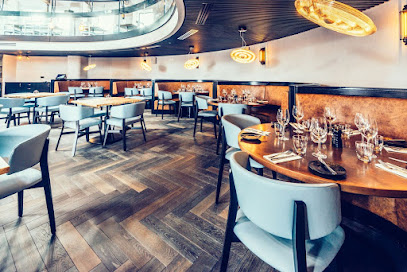
Octopus Restaurant
Discover exceptional seafood and stunning views at Octopus Restaurant in St. Peter Port - where every meal becomes an unforgettable experience.
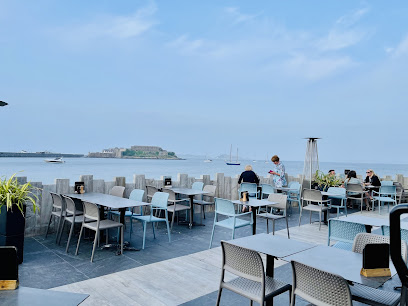
Ship & Crown
Experience exquisite dining at Ship & Crown in Guernsey - where delicious food meets stunning coastal views.
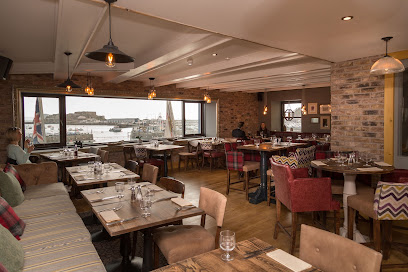
Dhaka
Explore Dhaka: A dynamic blend of history, culture, and culinary delights awaits in Bangladesh's vibrant capital city.
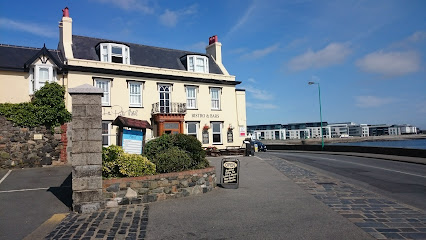
The Boathouse
Experience exquisite dining at The Boathouse in Guernsey, where fresh seafood meets stunning harbor views in a charming waterfront setting.
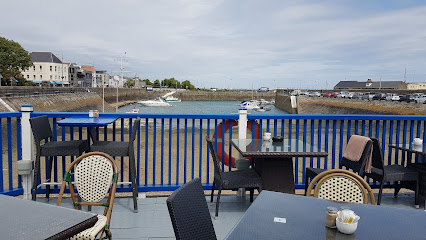
La Perla Restaurant
Discover La Perla Restaurant in Guernsey – where local ingredients meet exceptional dining in a cozy atmosphere.

Le Nautique Restaurant
Discover fresh seafood delights at Le Nautique Restaurant in St Peter Port - where exquisite taste meets stunning harbor views.
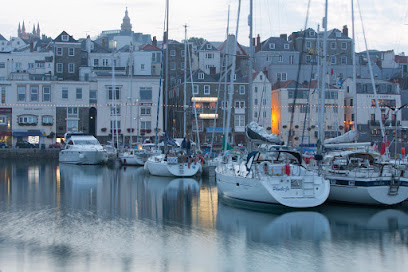
Pier 17 Restaurant
Discover exquisite seafood dining at Pier 17 Restaurant in Guernsey—where fresh flavors meet breathtaking views along the harbor.
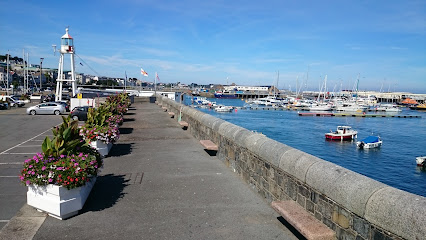
La Piette Hotel
Discover unparalleled comfort at La Piette Hotel in St. Peter Port with exquisite dining options and stunning harbor views.

Da Nello
Savor authentic Italian flavors at Da Nello, Guernsey's beloved restaurant known for its fresh ingredients and warm hospitality.
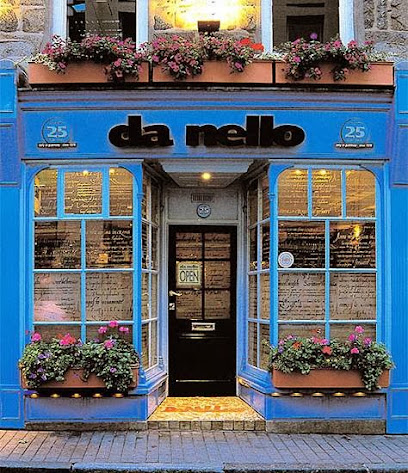
The Old Quarter Restaurant
Experience the essence of British cuisine at The Old Quarter Restaurant in Guernsey—where tradition meets contemporary flavors.
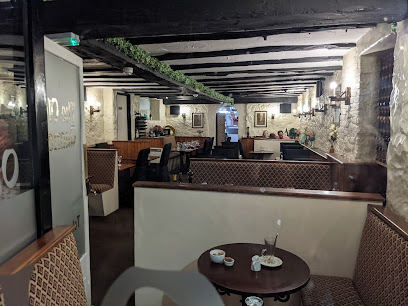
The Lobster and Grill
Experience exquisite seafood dining at The Lobster and Grill in Guernsey – where fresh flavors meet coastal charm.
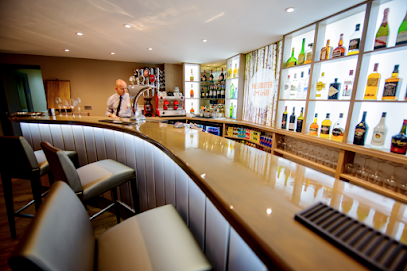
CORNERSTONE Social House
Experience culinary delights at CORNERSTONE Social House – St Peter Port's premier gastropub serving fresh local fare and vibrant drinks.
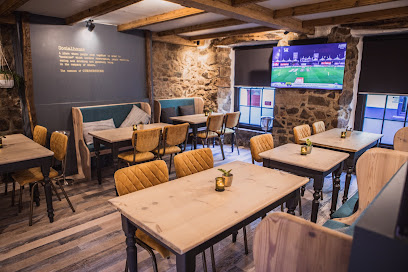
Markets, malls and hidden boutiques
Pier 17 Restaurant
Experience the best seafood and stunning views at Pier 17 Restaurant, a top destination for tourists in Guernsey.
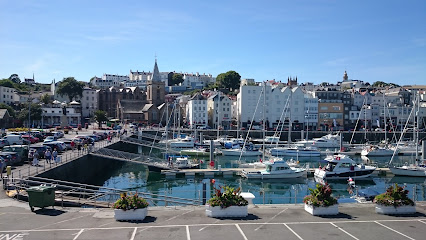
St. Peter Port Harbour
Experience the serene beauty and vibrant culture at St. Peter Port Harbour in Guernsey, a perfect spot for relaxation and exploration.
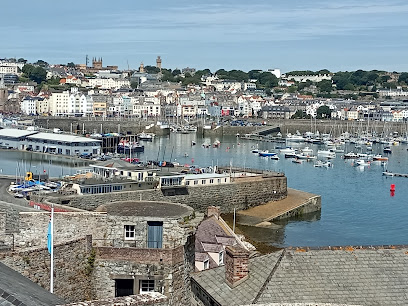
Guernsey Candles
Explore the enchanting world of handcrafted candles at Guernsey Candles, where creativity meets the charm of Guernsey.

La Fregate Hotel
Discover La Fregate Hotel, a charming Guernsey retreat offering stunning sea views, exquisite dining, and a perfect blend of comfort and hospitality.

Victoria Marina
Discover the picturesque Victoria Marina, a maritime oasis in Guernsey perfect for relaxation, dining, and adventure.
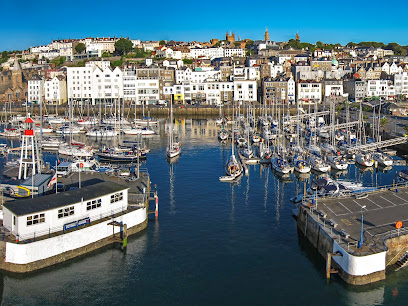
Iris & Dora Studios
Unleash your creativity at Iris & Dora Studios, where pottery classes in Guernsey offer a unique blend of art, culture, and hands-on learning.

National Trust of Guernsey Victorian Shop and Parlour at 26 Cornet Street
Explore the unique charm and historical treasures of the National Trust of Guernsey Victorian Shop and Parlour, a delightful stop for history lovers.
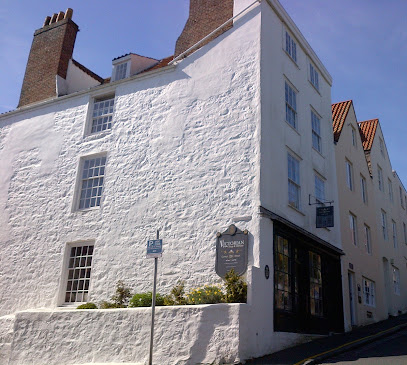
Cadeaux Guernsey Gift Shop
Discover unique gifts and local treasures at Cadeaux Guernsey, the perfect stop for souvenirs that capture the essence of the Channel Islands.
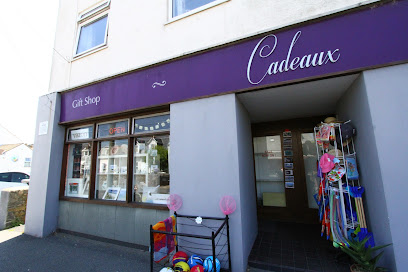
The Guernsey Shop
Explore The Guernsey Shop for unique local gifts and souvenirs that embody the charm of this beautiful island destination.
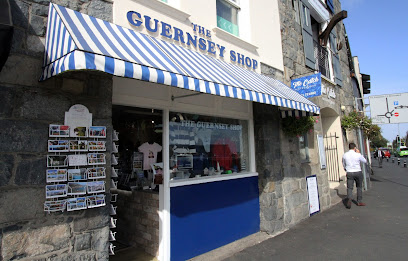
Quay Gallery
Explore the vibrant art scene at Quay Gallery in St Peter Port, showcasing local and international talent in a welcoming atmosphere.
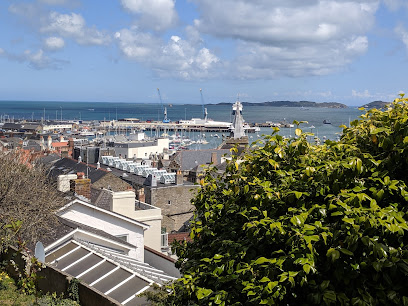
WHSmith
Discover a world of books, stationery, and crafts at WHSmith in St. Peter Port, Guernsey - a must-visit for every tourist.
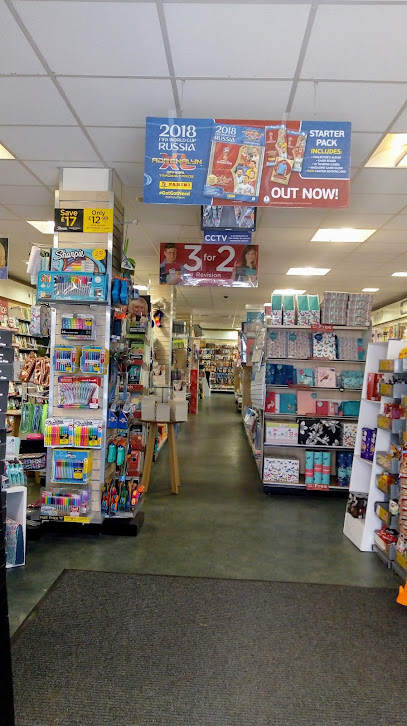
The Wine Alley
Discover an exquisite selection of wines at The Wine Alley in Guernsey, where local charm meets international tastes.
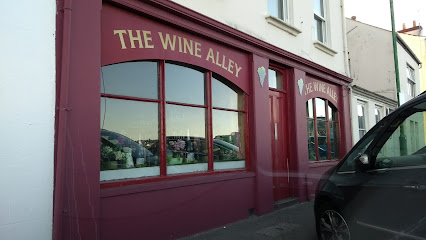
Guernsey Market Place
Discover the heart of Guernsey at the lively Market Place, where shopping meets local culture in a vibrant setting.
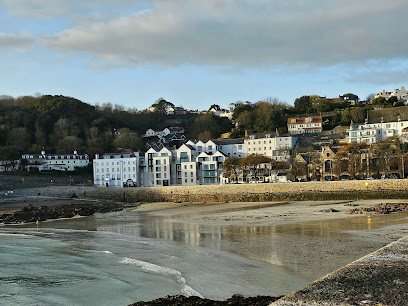
MYSA Guernsey
Explore the charm of MYSA Guernsey, your go-to gift shop for unique, locally crafted treasures and authentic souvenirs.
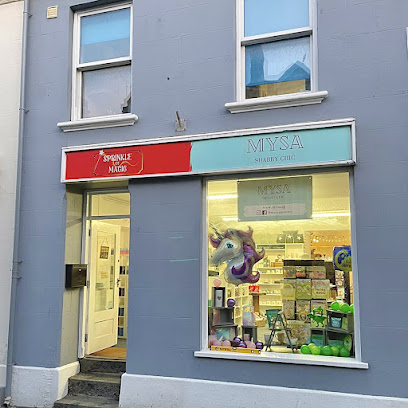
Carousel
Explore Carousel, Guernsey's enchanting gift shop, featuring unique souvenirs and local crafts that capture the island's charm.

Essential bars & hidden hideouts
Octopus Restaurant
Experience exquisite seafood and stunning coastal views at Octopus Restaurant in St. Peter Port, Guernsey, perfect for every food lover.
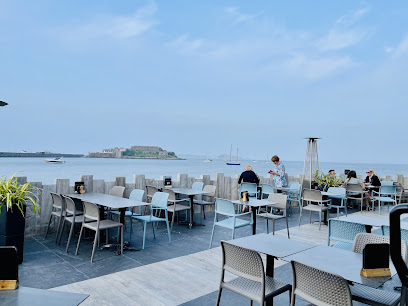
Ship & Crown
Experience the delightful flavors and vibrant atmosphere at Ship & Crown, Guernsey's premier restaurant and bar.
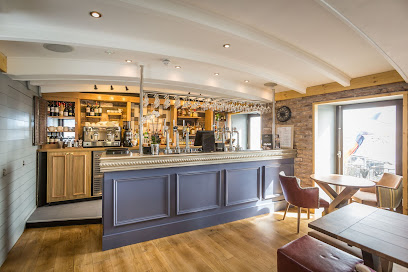
The Boathouse
Experience the best of Guernsey's local cuisine at The Boathouse, a picturesque restaurant on Victoria Pier with stunning waterfront views.
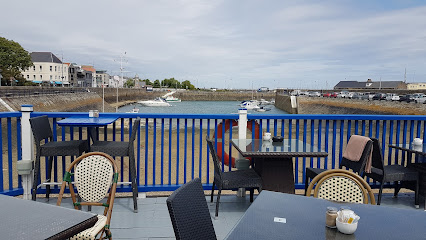
The Cock and Bull
Experience the vibrant atmosphere of The Cock and Bull, a premier pub in St. Peter Port, Guernsey, known for great beers and live music.
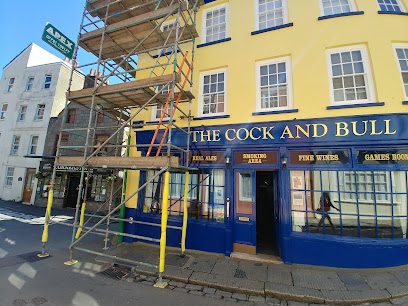
Le Nautique Restaurant
Experience the finest seafood dining at Le Nautique Restaurant in St Peter Port, where fresh ingredients meet stunning waterfront views.

The Prince of Wales - Randalls
Discover The Prince of Wales: Guernsey's vibrant restaurant and bar offering exquisite local cuisine and a lively atmosphere.
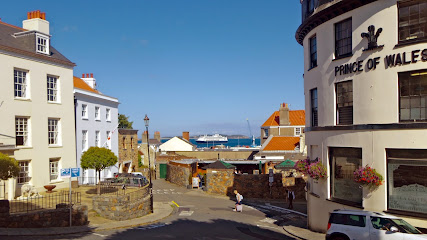
CORNERSTONE Social House
Discover the culinary delights and vibrant atmosphere of Cornerstone Social House, a premier gastropub in St Peter Port, Guernsey.

The Last Post - Mint Brasserie
Experience local flavors and a cozy atmosphere at The Last Post - Mint Brasserie in St Andrews, Guernsey, perfect for tourists seeking culinary delights.
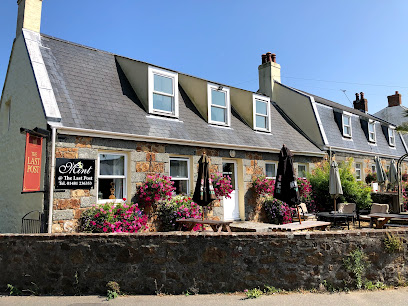
Albion House Tavern
Discover the local charm of Albion House Tavern in Guernsey, where delightful food and drinks meet a warm and inviting atmosphere.
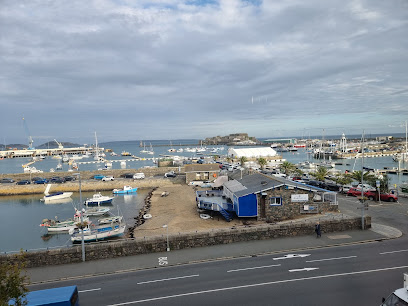
The Swan Inn
Discover the charm of The Swan Inn in Guernsey—where cozy ambiance meets a delightful selection of beverages for an unforgettable experience.
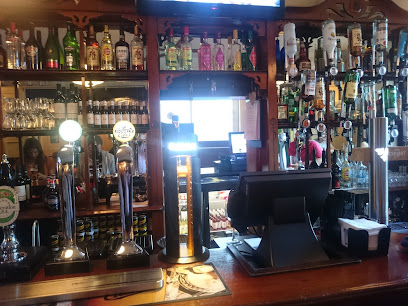
The Red Lion - Randalls
Discover the warmth of Guernsey at The Red Lion - a cozy pub offering delicious fare and a vibrant atmosphere for all visitors.
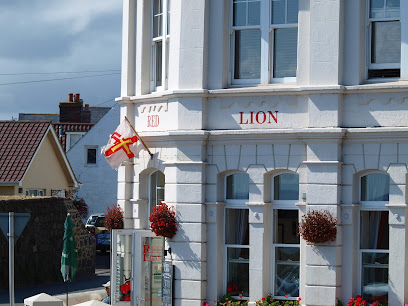
Sorrento
Discover the authentic flavors of Italy at Sorrento, Guernsey's premier Italian restaurant, where every dish is a celebration of culinary tradition.
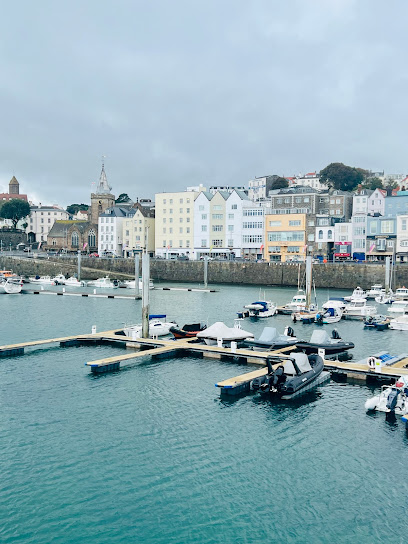
Copenhagen Bar and Grill
Experience the best of Guernsey at Copenhagen Bar and Grill, where exceptional grilled dishes and a vibrant atmosphere await you.

Harbour Lights
Experience the charm of Harbour Lights, a top pub in St. Peter Port, Guernsey, offering stunning harbor views and delightful local cuisine.

La Fontaine Inn - Randalls
Experience the charm of Guernsey at La Fontaine Inn - Randalls, where local brews meet hearty meals in a cozy pub atmosphere.
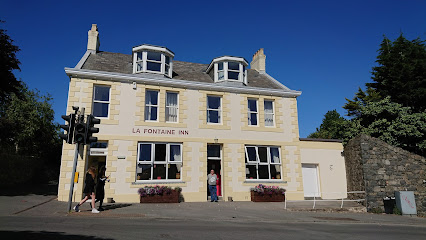
Local Phrases about St. Peter Port Waterfront
-
- HelloÂllo
[al-loh] - GoodbyeAu revoir
[oh rev-wah] - YesOui
[wee] - NoNon
[non] - Please/You're welcomeS'il vous plaît/De rien
[seel voo pleh/duh ree-an] - Thank youMerci
[mehr-see] - Excuse me/SorryExcusez-moi/Désolé
[ex-kyoo-zay mwa/day-zoh-lay] - How are you?Comment ça va?
[koh-mohn sah vah] - Fine. And you?Bien. Et toi?
[byen. ay twah] - Do you speak English?Parlez-vous anglais?
[par-lay voo on-glay] - I don't understandJe ne comprends pas
[zhuh nuh kohm-prahn pah]
- HelloÂllo
-
- I'd like to see the menu, pleaseJe voudrais voir le menu, s'il vous plaît
[zhuh voo-dray vwahr luh men-oo, seel voo pleh] - I don't eat meatJe ne mange pas de viande
[zhuh nuh mahnzh pah duh vee-ahnd] - Cheers!Santé!
[sahn-tay] - I would like to pay, pleaseJe voudrais payer, s'il vous plaît
[zhuh voo-dray pay-ay, seel voo pleh]
- I'd like to see the menu, pleaseJe voudrais voir le menu, s'il vous plaît
-
- Help!À l'aide!
[ah layd] - Go away!Allez-vous-en!
[ah-lay vooz ahn] - Call the Police!Appelez la police!
[ah-pay-lay lah poh-lees] - Call a doctor!Appelez un médecin!
[ah-pay-lay uh mayd-sahn] - I'm lostJe suis perdu
[zhuh swee pair-doo] - I'm illJe suis malade
[zhuh swee mah-lahd]
- Help!À l'aide!
-
- I'd like to buy...Je voudrais acheter...
[zhuh voo-dray ah-shet-ay] - I'm just lookingJe regarde juste
[zhuh ruh-gard zhewst] - How much is it?Combien ça coûte?
[kohm-byen sah koot] - That's too expensiveC'est trop cher
[say troh shair] - Can you lower the price?Pouvez-vous baisser le prix?
[poo-vez voo bay-say luh pree]
- I'd like to buy...Je voudrais acheter...
-
- What time is it?Quelle heure est-il?
[kell ur ay eel] - It's one o'clockIl est une heure
[eel ay oon ur] - Half past (10)Dix heures et demie
[dees ur ay duh-mee] - MorningMatin
[mah-tahn] - AfternoonAprès-midi
[ah-pray mee-dee] - EveningSoir
[swah] - YesterdayHier
[yehr] - TodayAujourd'hui
[oh-zhoor-dwee] - TomorrowDemain
[duh-mahn] - 1Un
[uhn] - 2Deux
[duh] - 3Trois
[twah] - 4Quatre
[kat] - 5Cinq
[sank] - 6Six
[sees] - 7Sept
[set] - 8Huit
[wheet] - 9Neuf
[nuff] - 10Dix
[dees]
- What time is it?Quelle heure est-il?
-
- Where's a/the...?Où est...?
[oo ay...] - What's the address?Quelle est l'adresse?
[kell ay lad-res] - Can you show me (on the map)?Pouvez-vous me montrer (sur la carte)?
[poo-vez voo muh mohn-tray (soor lah kart)] - When's the next (bus)?Quand est le prochain (bus)?
[kahnd ay luh proh-shan (boos)] - A ticket (to ....)Un billet (pour ...)
[uhn bee-yay (poor)]
- Where's a/the...?Où est...?
History of St. Peter Port Waterfront
-
St. Peter Port Waterfront is steeped in history dating back to the Neolithic period. Archaeological findings suggest that the area was inhabited by early settlers who utilized the natural harbor for fishing and trade. The name 'St. Peter Port' itself is derived from the Latin 'portus,' indicating its longstanding significance as a port town.
-
During the medieval era, St. Peter Port became a strategic military location. The construction of Castle Cornet began in 1206 under King John of England. This imposing fortress was built on a rocky islet at the mouth of the harbor and played a crucial role in defending the island from invaders. For centuries, it served as a fortification, barracks, and even a prison.
-
St. Peter Port’s strategic location made it a focal point during the Hundred Years' War between England and France. The town saw numerous battles and occupations, with Castle Cornet changing hands several times. The local population endured sieges and blockades, leaving an indelible mark on the community's resilience and identity.
-
The Victorian period marked a time of prosperity for St. Peter Port Waterfront. The expansion of maritime trade routes brought wealth to the town. Beautiful Victorian-era buildings and gardens were constructed, many of which still stand today, adding to the town’s charm. The development of the Guernsey Market and the Old Government House Hotel are notable landmarks from this era.
-
During World War II, the Channel Islands were the only British soil occupied by German forces. St. Peter Port became a heavily fortified area with bunkers, tunnels, and observation towers constructed by the occupying forces. The wartime occupation left a profound impact on the residents and the physical landscape of the town, remnants of which can still be explored today.
-
After the liberation in 1945, St. Peter Port underwent significant reconstruction and modernization. The waterfront evolved into a vibrant hub for tourism, with the restoration of historical sites and the development of new attractions. Today, it seamlessly blends historical charm with modern amenities, making it a popular destination for visitors from around the world.
St. Peter Port Waterfront Essentials
-
St. Peter Port Waterfront in Guernsey is accessible by air and sea. The nearest airport is Guernsey Airport (GCI), located approximately 4 miles from St. Peter Port. Flights from major cities in the UK and Europe are available. From the airport, you can take a taxi or a local bus to reach the waterfront. Alternatively, ferry services operate from ports in the UK and France, docking directly at St. Peter Port Harbour. The ferry journey offers a scenic introduction to the island.
-
Within St. Peter Port, walking is a popular option due to the town's compact size and picturesque streets. For longer distances, local buses are reliable and cover most parts of the island. Taxis are also available and can be hailed on the street or booked in advance. If you prefer more flexibility, consider renting a bicycle or a car. Keep in mind that Guernsey drives on the left side of the road.
-
The official currency in Guernsey is the Guernsey Pound (GGP), but British Pounds (GBP) are also widely accepted. Credit and debit cards are accepted in most establishments, including hotels, restaurants, and shops. It's advisable to carry some cash for smaller vendors and markets. ATMs are readily available throughout St. Peter Port.
-
St. Peter Port is generally a safe destination for tourists. However, as with any travel location, standard precautions should be taken. Avoid leaving your belongings unattended and be cautious in crowded areas. There are no specific high-crime areas targeting tourists, but always stay aware of your surroundings, especially at night.
-
In case of emergency, dial 999 for police, fire, or medical assistance. The Princess Elizabeth Hospital is the main medical facility in Guernsey and is well-equipped to handle emergencies. Pharmacies are available for minor health issues. It is advisable to have travel insurance that covers medical emergencies.
-
Fashion: Do dress casually and comfortably, but avoid overly revealing clothing. Smart-casual attire is suitable for dining out in the evening. Religion: Do respect local religious customs. While Guernsey is predominantly Christian, it's polite to dress modestly when visiting places of worship. Public Transport: Do be courteous and offer your seat to elderly passengers. Don't eat or drink on buses. Greetings: Do greet people with a friendly 'hello' or 'good day.' A handshake is appropriate for formal introductions. Eating & Drinking: Do try local delicacies such as Guernsey Gâche and seafood. Don't refuse hospitality, as it may be considered impolite.
-
To experience St. Peter Port Waterfront like a local, visit the daily fish market and sample fresh seafood. Explore the hidden alleys and lanes for charming boutiques and cafes. Engage with locals, who are often friendly and willing to share stories about the town's history. Don't miss the opportunity to take a stroll along the waterfront at sunset for stunning views of the harbour.
Trending Landmarks in St. Peter Port Waterfront
Nearby Cities to St. Peter Port Waterfront
-
Things To Do in St. Sampson
-
Things To Do in St. Andrew
-
Things To Do in St. Martin
-
Things To Do in Vale
-
Things To Do in Castel
-
Things To Do in Forest
-
Things To Do in St. Saviour
-
Things To Do in St. Anne
-
Things To Do in St. Ouen
-
Things To Do in St. Peter
-
Things To Do in St. Brelade
-
Things To Do in St. Lawrence
-
Things To Do in St. Aubin
-
Things To Do in Trinity
-
Things To Do in St. Helier









